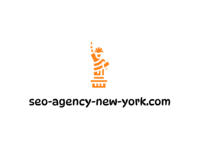
|
IN BRIEF
|
In the fast-paced digital landscape, landing pages have become critical touchpoints between businesses and potential customers. Understanding the key elements that contribute to conversion success is essential for any effective marketing strategy. These vital components, when expertly combined, can lead to significant increases in engagement and ultimately drive sales. By optimizing design, employing persuasive content, and ensuring an exceptional user experience, businesses can harness the power of landing pages to convert visitors into loyal customers.

Key Elements of a High-Converting Landing Page
Creating a high-converting landing page is essential for businesses looking to maximize their digital marketing efforts. This section will explore the fundamental elements that contribute to effective landing pages. Key components include a compelling headline, persuasive copy, and a clear call to action that guides visitors toward conversion. By understanding these elements, businesses can better engage their audience and enhance their chances of turning visitors into customers.
For instance, the headline serves as the initial hook, capturing the viewer’s attention and making them want to learn more about the offer. Following the headline, well-crafted content should resonate with the target audience, addressing their needs and pain points. Using visually appealing designs, such as images or video testimonials, can further enhance the page’s effectiveness by demonstrating the value of the product or service. Ultimately, these elements, when effectively combined, create a seamless user experience that encourages conversions.

Key Elements of a Successful Landing Page
The creation of a successful landing page hinges on several essential elements that distinctly enhance conversion rates. Research shows that the average landing page conversion rate sits at 2.35%, while the top 25% achieve conversion rates of 5.31% or higher. This highlights the importance of incorporating elements that capture attention and prompt action. First and foremost, a compelling headline should convey the value proposition clearly; it is the first contact point that can make or break the user’s interest. Equally important is the inclusion of scannable, persuasive copy that guides visitors through the benefits of the offer, using bullet points or short paragraphs for clarity.
Furthermore, the use of engaging visuals such as high-quality images or videos can significantly boost engagement levels. In fact, markers report that video content influences conversions by 38.6%. Additionally, having a clear call to action (CTA) is crucial; it directs the visitor on the next steps to take. Testing different colors, positions, and wording of CTAs can lead to notable improvements in conversion rates. Consideration of mobile optimization is also vital, as more than half of web traffic originates from mobile devices. To further enhance the performance of landing pages, continued optimization and analysis are necessary, making use of tools to track conversions effectively. Resources like understanding how to track your SEO rankings over time can provide invaluable insights into ongoing improvements needed for better conversion.
In addition, exploring techniques like featured snippets can also bolster your landing page’s visibility and engagement. Understanding the interplay between SEO and online advertising can optimize traffic directed to your landing pages, thus increasing the potential for conversions. Key metrics should always be tracked to inform how adjustments can lead to better results. Including calls for action through current popular trends can engage users while effectively targeting customer needs.
Key Elements for High-Converting Landing Pages
Understanding the Essentials
When crafting a high-converting landing page, it is crucial to focus on the essentials that will engage visitors and lead them toward taking action. Each element plays a significant role in guiding the user experience, so incorporating practical design principles can massively impact conversion rates. For instance, employing above-the-fold content captures user attention immediately, ensuring that your most persuasive messages are seen without requiring users to scroll.
Moreover, integrating user testimonials or video content can enrich the authenticity of your landing page. These elements serve to establish trust, driving visitors to convert. Recent studies show that video can greatly influence conversions, making it a valuable asset in your landing page arsenal.
- Compelling Headline: The first thing visitors notice; it should convey clear value.
- Clear Call to Action (CTA): This guides users on the next steps they should take.
- Scannable Copy: Well-structured content that is easy to read enhances user engagement.
- Custom Visuals: Tailored images or designs that align with your branding improve recognition.
- Mobile Responsiveness: Ensuring the page functions well on any device helps reach a wider audience.
By focusing on these essential components and regularly testing and optimizing your landing pages, you can significantly boost your conversion rates. Each of these elements can be further elaborated based on the unique needs of your audience and the objectives of your marketing campaigns. For more detailed guidance on creating effective landing pages, check out resources available at Admomenta and SITE123.

High-Converting Landing Pages: Key Elements and Best Practices
To enhance your marketing campaigns and improve conversion rates, it is essential to understand the fundamental aspects of a high-converting landing page. Key components include an attractive design, persuasive content, and a seamless user experience. By incorporating these elements effectively, you can significantly elevate visitor engagement and increase lead generation.
One of the primary focus areas should be on the customer’s journey. This includes creating copy that is easy to scan and visually appealing graphics that highlight your brand’s offerings. Ensuring accessibility on all devices is vital for reaching a larger audience.
Additionally, essential elements like compelling headlines, above-the-fold content, and clear call to action buttons can make a substantial difference in how users interact with your page. The initial viewing of a landing page is critical; it often determines whether visitors stay or leave.
The importance of continuous testing and optimization cannot be overstated. Regularly analyzing the effectiveness of your landing page design and content helps identify areas for improvement, ensuring that your strategies remain relevant and impactful.
By aligning your landing page with both user needs and campaign objectives, you can significantly boost the likelihood of converting visitors into customers. Remember, the average conversion rate is around 2.35%, but aiming for higher benchmarks—such as 5.31% or more—can lead to more meaningful results.

Creating a high-converting landing page is essential for achieving greater conversion rates and optimizing your marketing efforts. By focusing on key elements such as an eye-catching headline, compelling copy, and a clear call to action, businesses can guide visitors smoothly through the conversion journey. Essential components like persuasive visuals, user-friendly design, and mobile optimization play a significant role in shaping user experience, making it easier for them to engage and convert.
Moreover, understanding the customer’s journey allows marketers to tailor landing pages that resonate with their target audience. Regular testing and optimization are crucial in maintaining effectiveness over time, ensuring visitors find value in what is presented. This iterative process not only enhances visitor engagement, but also boosts overall business growth.
Ultimately, mastering the art of landing page design can transform your online marketing strategy, making it more effective. As digital trends continue to evolve, staying attuned to the latest best practices and elements will be key in maintaining a competitive edge in driving conversions.
